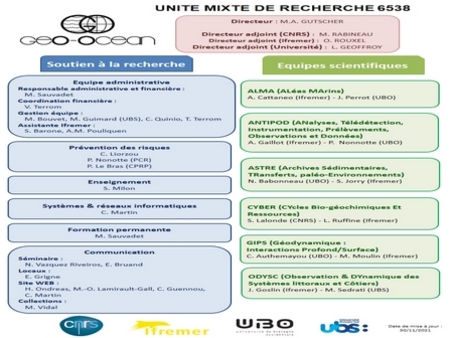14 avril : Séminaire de David Schlaphorst
Seismological insights into the structure of slow oceanic plate formation, alteration and destruction
David Schlaphorst : Ciênscias Ulisboa (Faculté des Sciences, Université de Lisbonne, Portugal)
le vendredi 14 avril, 14h30, Amphi A, Institut Universitaire Européen de la Mer
The slow-moving oceanic plates in the North Atlantic show significant differences in crustal and upper mantle structure and dynamics in comparison with their fast-moving counterparts in the Pacific. However, those features have been studied comparatively little. This talk will show results focussing on the regions of slow-moving oceanic plate formation (Mid Atlantic Ridge), alteration (around the Canary and Madeira hotspots) and destruction (Lesser Antilles Arc subduction zone in the Caribbean).
With the help of seismic island broadband stations and ocean-bottom seismometer (OBS) networks it is possible to probe the dynamics by investigating seismic anisotropy patterns. These are formed by variations in the speed of seismic waves as a function of the direction of wave propagation and are caused by the subsurface stress field. He patterns can be probed by observing shear-wave splitting. Results show different combinations of mantle and crustal contributions in all areas and are hinting towards varying forms of significant disruption of asthenospheric mantle flow. On volcanic islands, temporal changes in splitting parameters can be linked to subsurface movement of magma.
To get a better understanding of crustal and upper mantle structure it is possible to observe seismic phases that are converted on subsurface discontinuities by creating receiver functions. Results show interesting differences in different hotspot systems, possibly linked to their plume connection, as well as highly varying crustal discontinuity structure in a slow subduction zone, reflecting difference in lubrication subduction.
In the future, new OBS networks will help to resolve broader subsurface patterns away from the islands.

